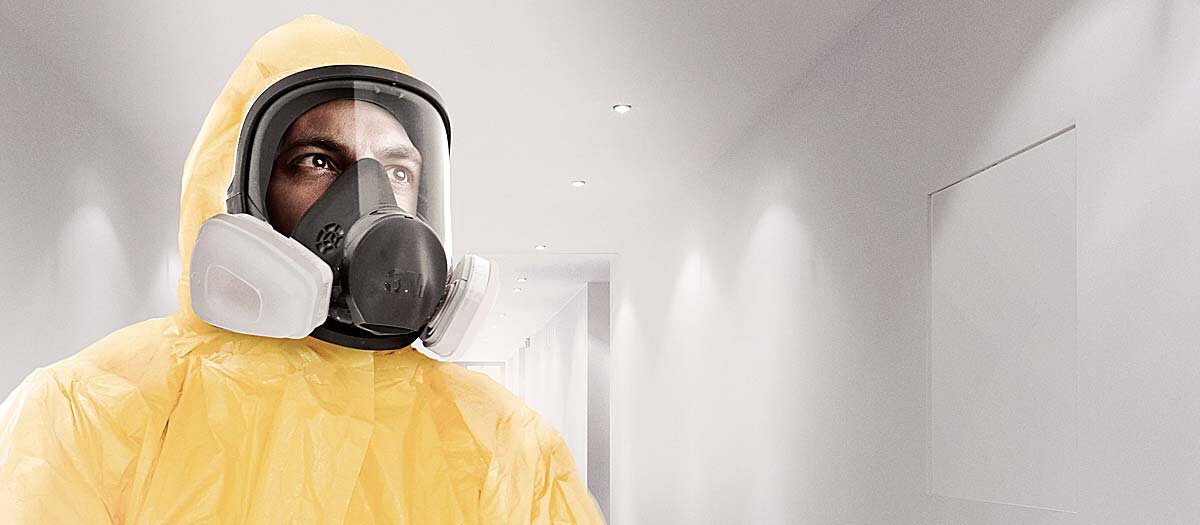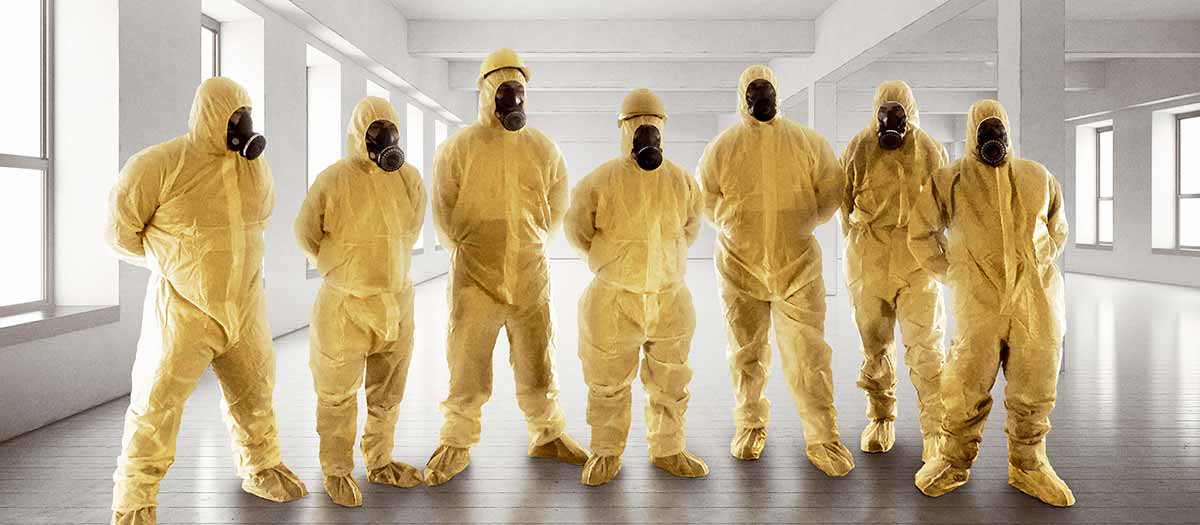
With our Class A asbestos removal license, we can remove asbestos from the following:
Residential properties
Commercial properties
Roofing
Wall cladding
Exterior materials
Fences
Ceilings
… AND MORE!
Our experience with asbestos
With the new regulation for asbestos coming into full effect by April 2018, asbestos workers must not only be licensed but shall also be H&S compliant. Chemcare has supervisors specialising in asbestos removal, properly trained to dispose of the hazardous material. We aim to provide you with the most stress-free service.
We can provide testing for asbestos as our Senior Technical Advisor who is a licensed Work Safe Asbestos Assessor AA18070101. We also have a Class A asbestos removal license. You can check out our license here on the Worksafe Asbestos License Holder Register.
Talk to us about how Chemcare can remove asbestos from your property when you are in the process of renovation or demolition. When it comes to removing asbestos, control is a key component in successful decontamination.
Our technicians take the greatest care to comply with all safety standards. We can even help with re-jibbing of your ceiling, which means one less thing to think about after we finish removing your asbestos issue.
Call 0800 800 646 or contact us to see how we can help you.
An Experienced Team

When you need an asbestos removalist
If you’re thinking of doing any kind of renovation in an area that contains asbestos - you HAVE to get the asbestos removed safely. When you go under renovation, you effectively become a PCBU (Person Conducting Business or Undertaking). Anyone who comes on-site to your property is therefore your responsibility. It is important that there’s no risk of them inhaling the asbestos when they’re undertaking any renovation work.
Be prepared and don’t let asbestos halt your renovation plans!
The difference between Class A & Class B asbestos removal
When you talk to an asbestos removal company, they may refer to the removal of asbestos as: 'class A' or 'class B' - which refers to the type of asbestos and how much can be removed.
Those with a class A removal license can remove:
Any amount of friable asbestos or ACM (a material that is easily reduced to a powder when crushed by hand like low density boards)
Any amount of non-friable asbestos or ACM (harder to extract the asbestos from the material as it it generally bonded to the surface)
Any amount of ACD (Asbestos Contaminated Debris)
Those with a class B removal license can remove:
Any amount of non-friable asbestos or ACM
ACD that is linked to the removal of any amount of non-friable asbestos or ACM
Read more information on the difference between class A and class B
Asbestos in New Zealand
The adoption of asbestos in New Zealand to produce fire-resistant products, insulating materials and hardier materials such as underground piping infrastructure, basically followed the trends of larger developed economies.
Asbestos was a popular building material in a variety of operations, including roofing materials such as shingles, tiles, siding, and roofing felt, which is a layer of material that is placed under the shingles or tiles to protect the roof deck. If you have an older home, it is possible that your roof contains asbestos. Other places in older homes where asbestos might be present include what is known as a ‘popcorn ceiling’. Made by spraying a mixture of asbestos, vermiculite, and other materials onto the ceiling, this technique makes for a stippling effect and was popular before the discovery of the dangers of asbestos.
Asbestos can also be found outside of the house, such as in fences. These fences can become damaged over time, releasing asbestos fibres into the air. Even if the fence appears to be in good condition, it's still possible for asbestos fibres to be released if the fence is disturbed or removed.
Chemcare undertook an exercise in mid 2018 to try to identify what actual volumes of asbestos might be contained in New Zealand building and infrastructure to get a glimpse of the amount of asbestos removal work that needs to be done.
Inquiries to the six largest Councils of New Zealand as well as some regional health boards indicated that it would take thousands of hours to arrive at even an approximate figure.
However, it can be assumed that tens of millions of tonnes of asbestos- contaminated materials exist almost everywhere in the nation.
In New Zealand, the banning of asbestos in any construction materials, was imposed in the year 2000. This means that any buildings erected since then, are probably free of asbestos.
Sources have advised Chemcare that some asbestos materials may have been imported after this deadline but the ban has had a large effect in reducing the spread of asbestos.
By 2015, however, it was reported that over two million tonnes of asbestos were still being mined worldwide. Therefore, planning for safe asbestos removal over time will remain relevant even after the enactment of related legislation.
Why it’s important not to remove the asbestos yourself
Although Kiwis are known for their DIY enthusiasm, it’s very unsafe to do it alone and try asbestos removal by yourself. In fact, trying to remove asbestos may in fact make the asbestos airborne, which would contaminate your entire home.
There are also strict recommendations on how you should dispose of the removed asbestos, if not followed correctly, a removal company is not going to be legally allowed to remove it.
If your home has any asbestos present, such as in the wall cladding, ceiling, roofing, fence, or even in soil, it is important to have it removed to protect yourself and your family from exposure. Asbestos fibres can be released into the air when these materials are disturbed, even during minor repairs. Once in the air, asbestos fibres can be inhaled and lodged in the lungs.
The safest way to remove an asbestos fence is to hire a licensed asbestos removal company. Therefore our best recommendation is to leave the asbestos clean-up and removal job to the experts at Chemcare. Our specialists have the training and equipment to safely remove asbestos materials without releasing asbestos fibres into the air.
Read more information on why it's important not to remove the asbestos yourself
Outstanding services backed by certifications
Our ISO certifications demonstrate our commitment to industry standards. You can be assured that we carry out all asbestos removal jobs with the highest consideration for quality, the environment, and health and safety.
We hold the following ISO certifications:
ISO 9001:2015 (Quality Management System) - QAS International
ISO 14001:2015 (Environmental Management System) - QAS International
ISO 45001:2018 (Occupational Health and Safety Management System) - BSI Group
Where we can remove asbestos
We cover several regions particularly in the North Island of New Zealand for asbestos removal. We mainly operate in Auckland, Hamilton, Wellington, and Tauranga but also service Christchurch. If your area or region is not yet listed here, please get in touch with us anyway, as we might still be able to deliver the asbestos removal work in your specific location and industry.






